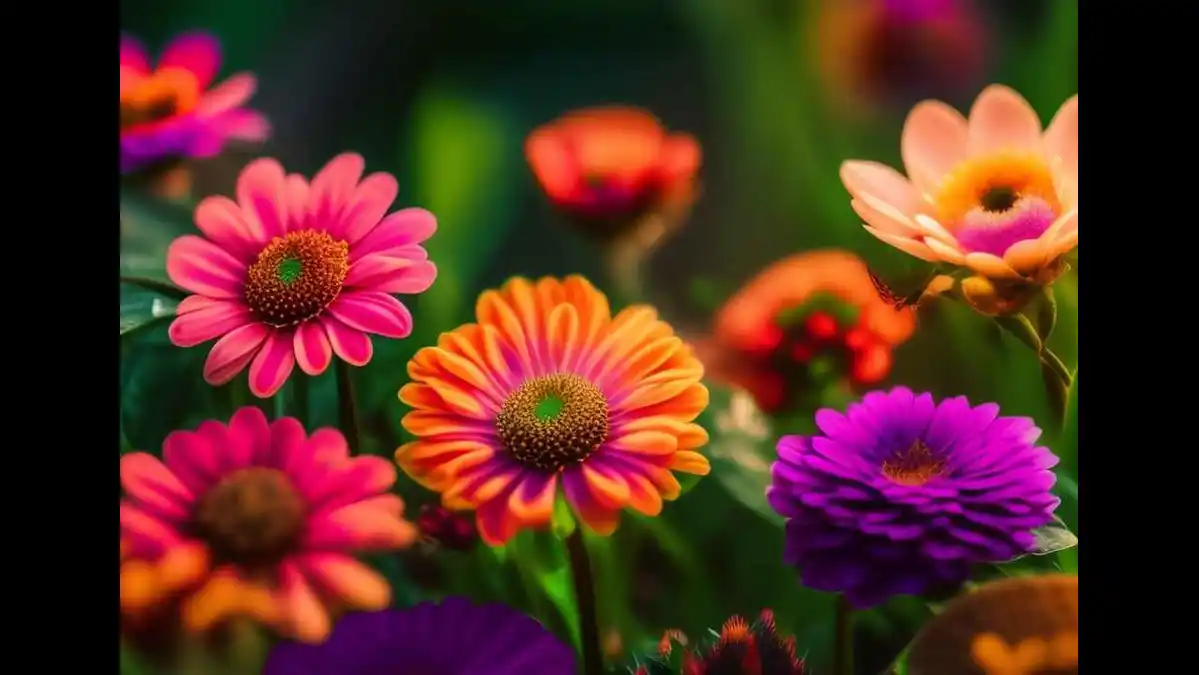Introduction to the article and why flowers are important
Flowers have an undeniable charm that captivates hearts and enhances our surroundings. Their vibrant colors, delicate petals, and enchanting fragrances create a sensory experience like no other. Whether gracing a bustling garden, adorning a wedding bouquet, or brightening up your living room table, beautiful:by5oj2_qmci= flowers play a crucial role in our lives.
But their significance goes far beyond aesthetics. Flowers are intertwined with culture, tradition, and emotion across the globe. They symbolize love during romantic gestures and serve as offerings in spiritual practices. Each bloom carries its own story waiting to be uncovered.
Join us on this journey through the world of beautiful:by5oj2_qmci= flowers as we explore their significance in various cultures, delve into fascinating types and meanings, discover how they influence our mental well-being, and even learn how to cultivate your very own floral paradise! With so much to uncover about these natural wonders, prepare to be inspired by the beauty that surrounds us every day.
The significance of flowers in different cultures and religions
Flowers have long held a special place across various cultures and religions. In many traditions, they symbolize love, purity, and renewal. For instance, in Hinduism, marigolds are often used in rituals to honor deities.
In Japan, cherry blossoms signify the transient nature of life. These delicate blooms remind us of beauty’s fleeting moments and are celebrated during Hanami festivals each spring.
Christianity also embraces flowers as sacred symbols. Lilies represent purity and resurrection while roses embody divine love.
Across Africa, colorful wildflowers play an integral role in celebrations and ceremonies. They often express joy or sorrow depending on the occasion.
From weddings to funerals, flowers weave through cultural tapestries worldwide. Their meanings vary but consistently reflect human emotions—love, loss, hope—connecting people through shared experiences that transcend boundaries.
Types of flowers and their meanings
Flowers are not just pretty faces; each type carries a unique meaning. Roses, for instance, symbolize love and passion. Their vibrant colors add depth to their significance—red for romance, while yellow conveys friendship.
Lilies evoke purity and commitment. Their elegant petals often grace weddings, representing devotion between partners. Sunflowers stand tall with a message of adoration and loyalty.
Daisies bring a sense of innocence and cheerfulness. Often seen in childhood memories, they remind us to cherish simple joys.
Chrysanthemums tell stories of longevity and fidelity across cultures. In some places, they’re symbols of death but also celebrate life’s enduring beauty.
Orchids represent exotic elegance. They signify strength and luxury due to their rare nature.
Understanding these meanings enriches our interactions with these beautiful:by5oj2_qmci= flowers—transforming ordinary moments into meaningful exchanges filled with emotion.
The science behind the beauty of flowers
The beauty of flowers is a fascinating interplay of biology and aesthetics. Their vibrant colors, intricate shapes, and delightful fragrances are designed to attract pollinators like bees and butterflies. The pigments in petals, such as anthocyanins and carotenoids, create the stunning hues we admire.
Flowers also utilize symmetry in their design. This balance captures our attention and enhances their visual appeal. Studies show that symmetrical patterns can evoke feelings of pleasure and harmony.
Moreover, scent plays a crucial role too. Volatile compounds released by flowers can trigger emotional responses in humans. Certain aromas might even enhance mood or evoke memories.
Pollination isn’t just about reproduction; it’s an evolutionary dance highlighting nature’s ingenuity. Each bloom tells a story through its structure—an invitation for interaction between plants and wildlife while captivating human hearts.
How to create a beautiful flower garden
Creating a beautiful flower garden is an art. Start by choosing the right location. Look for spots with ample sunlight and good drainage.
Next, select your flowers wisely. Consider bloom times to ensure color throughout the seasons. Mix perennials with annuals for lasting beauty.
Soil preparation matters significantly. Enrich it with organic compost to promote healthy growth. Test pH levels if necessary; some flowers thrive in specific conditions.
Design the layout thoughtfully. Group plants based on height, color, and texture for visual appeal. Use pathways to allow easy access while enhancing aesthetics.
Regular maintenance is key—water consistently but avoid overwatering. Deadhead wilted blooms to encourage new ones and keep pests at bay naturally.
Embrace seasonal changes by rotating flowers yearly for constant renewal in your garden’s charm. Enjoy watching it flourish!
The impact of flowers on mental health and well-being
Flowers have a profound effect on our mental health. Being around them can elevate your mood and bring a sense of calmness. Their vibrant colors and delicate fragrances stimulate positive emotions.
Studies show that having flowers in your space reduces stress and anxiety levels. Caring for plants can also provide purpose, creating a nurturing environment that fosters personal well-being.
Nature’s beauty often inspires creativity too. Artists and writers find motivation in blooms’ shapes and colours, leading to moments of inspiration that enrich their work.
Moreover, flowers serve as symbols during significant life events—celebrations or remembrances—which help us connect emotionally with others. This connection enhances feelings of belonging.
Incorporating beautiful:by5oj2_qmci= flowers into daily life nurtures not just our surroundings but our minds as well. Embrace this natural remedy for upliftment whenever possible; it makes a difference!
Exploring unique and exotic flowers from around the world
The world of flowers is vast and filled with extraordinary specimens. Unique and exotic blooms can be found in every corner of the globe, each telling its own story.
Take the Corpse Flower, for instance. Native to Sumatra, it’s famous for its enormous size and pungent odor—an aroma reminiscent of rotting flesh. This rare bloom draws crowds when it finally opens after years of dormancy.
Then there’s the Blue Vanda Orchid from Southeast Asia. Its vibrant blue hue is mesmerizing, making it a favorite among flower enthusiasts.
You’ll find the Rafflesia arnoldii in Madagascar—the largest individual flower on Earth. Measuring up to three feet across, this unique plant has no leaves or stems; instead, it emerges directly from its host vine.
Each exotic flower offers a glimpse into nature’s creativity and diversity. Their distinct characteristics inspire awe and wonder around every petal.
Preserving and caring for cut flowers
To keep cut flowers looking fresh, start by trimming the stems. Use sharp scissors or a knife to create a diagonal cut, which increases the surface area for water absorption.
Next, remove any leaves that might sit below the waterline. Foliage in water can lead to bacteria growth, which shortens their lifespan.
Choosing the right vase is also essential. Make sure it’s clean before adding your blooms. If available, fill it with lukewarm water mixed with flower food; this nourishes the blooms and helps prevent wilting.
Place your arrangement away from direct sunlight and heat sources like radiators or appliances. A cooler environment helps maintain their vibrant colors longer.
Check the water level daily and change it every few days to keep things fresh. With these simple steps, you can enjoy beautiful:by5oj2_qmci= flowers for an extended period!
Using flowers as a source of inspiration in art, literature
Flowers have long served as a muse for artists and writers alike. Their vivid colors, intricate shapes, and delicate fragrances evoke emotion and spark creativity. From the vibrant tulips in Van Gogh’s paintings to the romantic symbolism of roses in poetry, flowers play a pivotal role in artistic expression.
Writers often weave flowers into their narratives to symbolize love, hope, or even sorrow. The imagery of blooming petals can encompass new beginnings or remind readers of life’s transience. Through literature, flowers transcend their physical beauty and become metaphors that resonate deeply with readers.
In art galleries worldwide, floral arrangements are frequently featured subjects—capturing fleeting moments celebrating nature’s artistry. Sculptors also draw inspiration from flowers’ forms to create stunning works that echo organic beauty.
Whether through brushstrokes on canvas or words penned on paper, beautiful:by5oj2_qmci= flowers inspire countless creators across generations. They remind us of nature’s elegance while inviting us to reflect on our experiences and emotions intertwined with these enchanting blooms.




